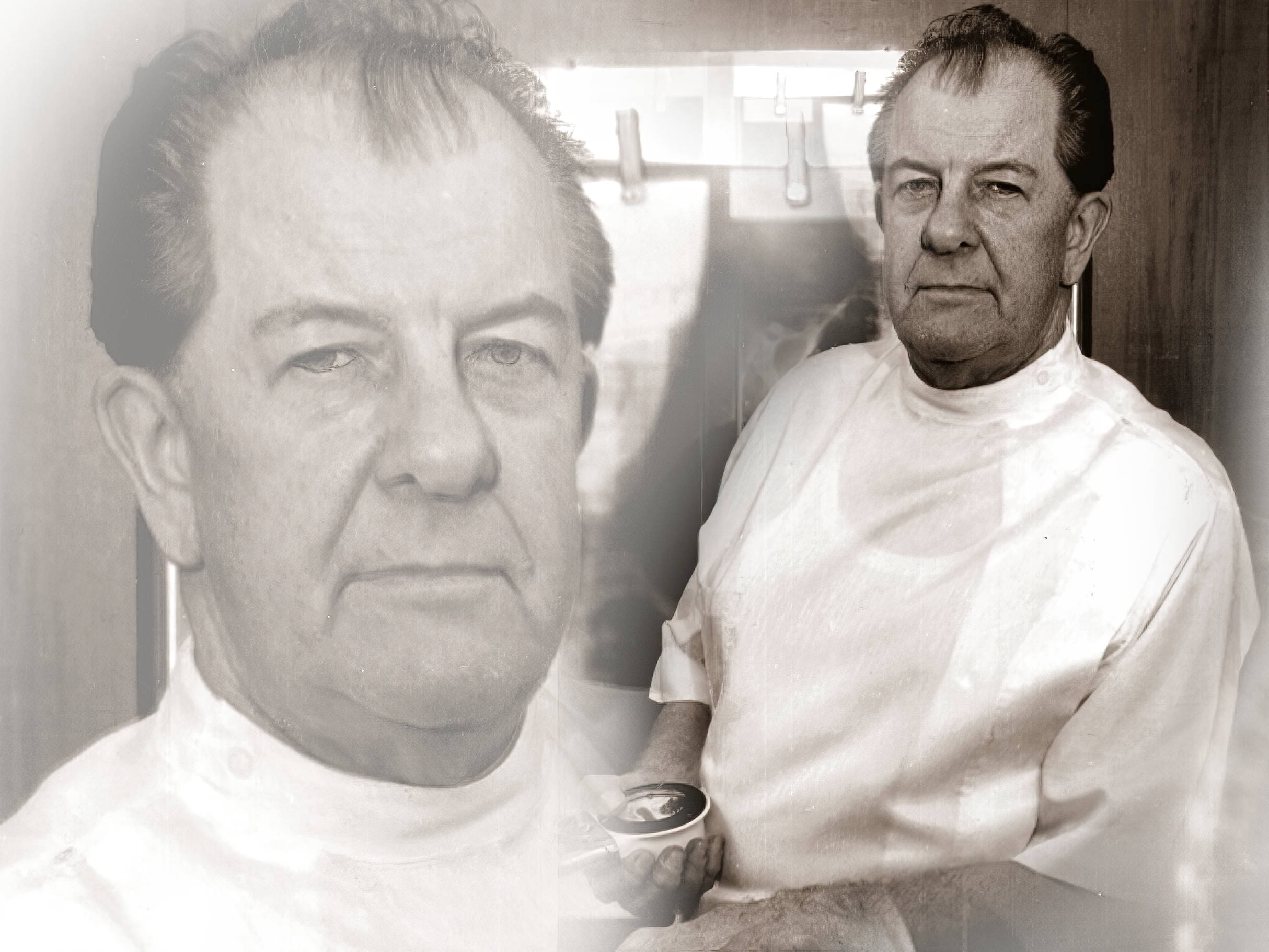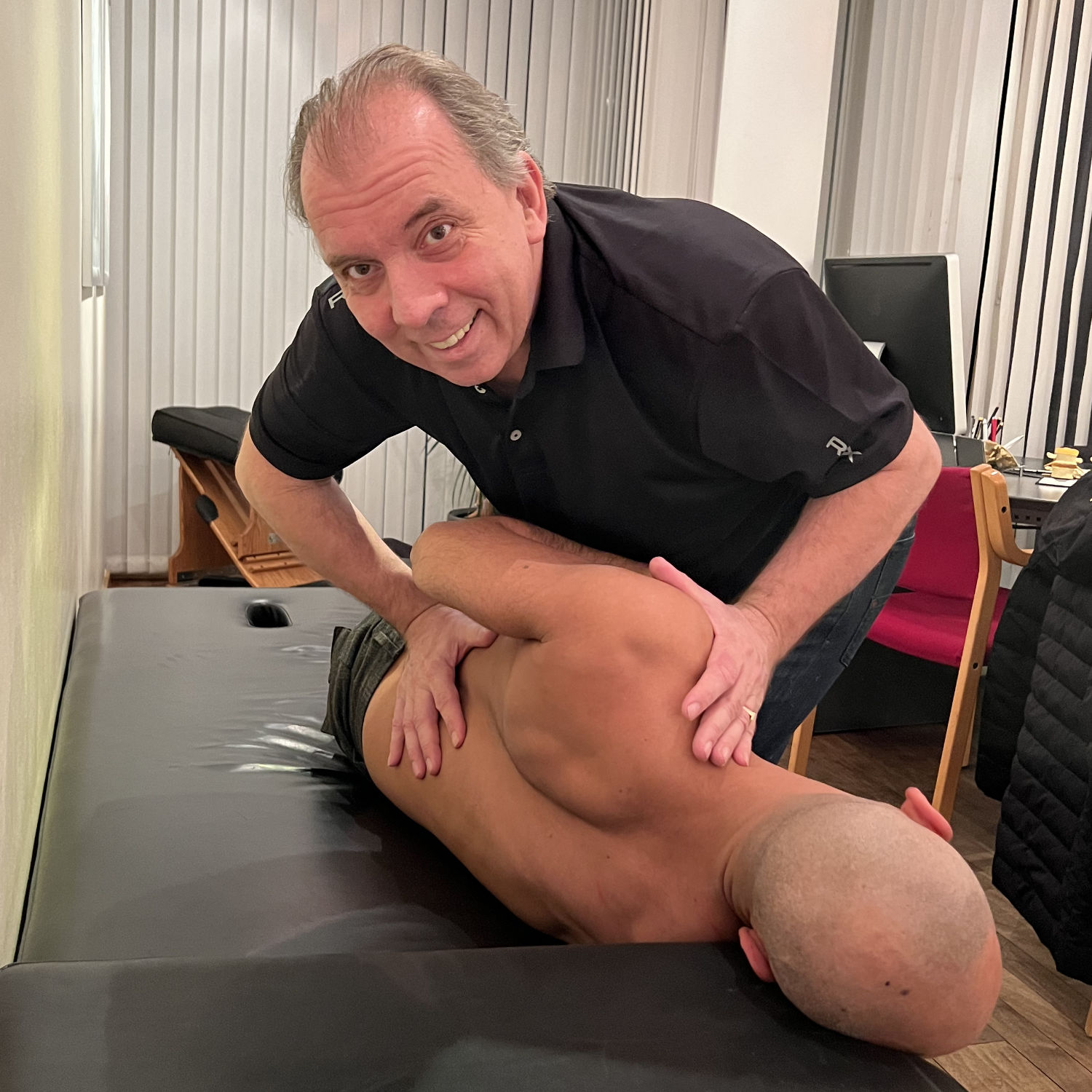Gonstead
At Chiropraxis Hamburg, we exclusively use the Gonstead method


Dr. Clarence Gonstead, Mount Horeb, Wisconsin, USA
Dr. Clarence S. Gonstead (July 23, 1898 – October 2, 1978) is the inventor of the world-famous Gonstead technique.
The Gonstead Technique in Chiropractic
Clarence S. Gonstead, Doctor of Chiropractic (D.C.) graduated in 1923. During his active time as a chiropractor, he developed and perfected the Gonstead System until 1978, the year of his death. His aim was to optimize the effectiveness of chiropractic treatment and the associated examination. It was very important to him to use the principles of chiropractic as the basis of this system. (1)
With his determination and dedication, Dr. Gonstead often spent more than 15 hours a day, six and a half days a week, examining and treating patients. Over the years, he has given more than three million treatments and built the largest chiropractic practice in the world at the time (1964). The practice had 11 treatment rooms, space for 120 patients in the waiting room and an adjoining hotel with a nearby airport. The practice also had seminar rooms and its own laboratory so that it could continue to develop the Gonstead system and pass on this knowledge. (1,2)
The Gonstead System differs from other chiropractic techniques primarily in the examination and treatment. The examination includes a detailed medical history, an analysis of the function of the spine, the detection of inflammation of the vertebral joints and the examination of X-ray images. It is important that all steps are taken for each treatment and that nothing is left out. For legal reasons, X-ray images in Germany are only possible with existing images. In terms of treatment, the Gonstead system places particular emphasis on the intervertebral disc in order to influence the main support of the spine. In addition, the direction and intensity of the adjustment is adjusted with the aim of ensuring maximum safety and comfort. (3)
In order to create a biomechanically relevant X-ray image, we ask you, if you are in the process of having an X-ray taken, to have it taken in a standing position.

The Gonstead Clinic, Mount Horeb, Wisconsin, USA
In 1964 Dr. Clarence Gonstead built the largest chiropractic practice in the world, with 11 treatment rooms – chemistry laboratory – research rooms – seminar rooms – hotel – swimming pool – sauna.
Nervoscope
Part of the analysis in the Gonstead system is the so-called Nervoscope. A device that compares the surface temperature of the skin directly next to the spine between two receptors. The idea behind this is that a vertebral subluxation (as described in “The Origin of Chiropractic”) triggers various processes in this area through its influence on the nervous system. One of these processes is the initiation of inflammation to support the healing process. Part of this inflammation is then also an increased temperature in this area. (4,5) In places where there is a malfunction in the joint and nerve (a vertebral subluxation), a difference in surface temperature can be detected over a very small area, the minimal size of the area helps to distinguish temperature fluctuations caused by subluxations from those caused by musculature.
In the Gonstead system, great importance is attached to this temperature difference, as it gives an indication of whether treatment in this area is necessary at that time. (6)
If a characteristic temperature difference is found, this area is examined in detail for other characteristics, such as reduced freedom of movement, redness and pain sensitivity. Only after further analysis is a decision made as to how and where treatment will take place. All steps of the analysis are always considered together.

René Oehlenschlaeger, D.C., Chiropraxis Hamburg
Here is a measurement with the Nervoscope.
René Oehlenschlaeger, D.C., Chiropraxis Hamburg
Here is a Gonstead adjustment of the cervical spine on the cervical chair.
René Oehlenschlaeger, D.C., Chiropraxis Hamburg
Here is a Gonstead adjustment of the thoracic spine on the hylo.
The video shows a Gonstead adjustment by Ian Rossborough (Gonstead Chiropractor in Australia)
How many adjustments are necessary?
In general, this cannot be answered in general terms, as each body is individual and is viewed and treated as such. In addition, the general condition of the body influences the recovery rate. The health of a patient with a healthy lifestyle (e.g. plenty of exercise, a healthy diet, a balanced posture, etc.) can quickly improve through chiropractic treatment. In comparison, a patient with a poorer lifestyle often needs more treatments over a longer period of time to achieve the same goals. As a rule, treatments are recommended daily to every two or maximum three days in the initial stages. In very acute and time-limited cases, such as before a sporting event or a trip, as well as for patients who come to us from abroad, we can also treat several times a day. In less acute cases, once a week may be sufficient. In general, the frequency is discussed from treatment to treatment in order to guarantee an individualized course. After treating the symptoms, it is then recommended to schedule a treatment every few weeks for stabilization, in order to detect and correct new problems as early as possible and also to maintain the general function of the nervous system.
Depending on the lifestyle and severity of the subluxations, 10 – 15 treatments are required until stabilization. In some cases, however, it only takes 5 treatments and in extreme cases more than 20 treatments may be necessary to achieve this state. Here again, factors such as age, lifestyle, work and wear and tear on the joints are taken into account.
Once full functionality and stabilization of the spine has been achieved, we recommend a preventive regular examination/adjustment, which can be between four and twelve weeks, in order to maintain this functionality for as long as possible. We are also happy to answer more detailed questions directly in the treatment room.
Depending on the lifestyle and severity of the subluxations, 10 – 15 treatments are required until stabilization. In some cases, however, it only takes 5 treatments and in extreme cases more than 20 treatments may be necessary to achieve this state. Here again, factors such as age, lifestyle, work and wear and tear on the joints are taken into account.
Once full functionality and stabilization of the spine has been achieved, we recommend a preventive regular examination/adjustment, which can be between four and twelve weeks, in order to maintain this functionality for as long as possible. We are also happy to answer more detailed questions directly in the treatment room.
With chiropractic, you need have no concerns about slipped discs, osteoporosis, joint wear and tear or other musculoskeletal problems. Chiropractic not only has very good results in these cases, but also has a very low risk of causing unwanted side effects. This is because the strength of the treatment is adapted to the patient and the different treatment benches allow many different treatments for the same problem. For example, if you have a very acute slipped disc, you can still come to us for treatment. Or find help with severe joint wear and seemingly hopeless symptoms.
On the subject of unwanted side effects, there is often talk of ligaments and joint capsules becoming loose due to manipulation. This is not the case in chiropractic, however, as it does not manipulate but instead applies specific adjustments to exclusively blocked joints. Therefore, an adjustment does not work outside the normal range of movement of a joint and thus prevents ligaments from slipping out.
The video shows a Gonstead adjustment by Rahim Salehmohamed (Gonstead Chiropractor in USA)
René Oehlenschlaeger, D.C., Chiropraxis Hamburg
Here is a Gonstead adjustment of the thoracic spine on the Knee Chest.
René Oehlenschlaeger, D.C., Chiropraxis Hamburg
Here is a Gonstead adjustment of the lumbar spine on the Pelvic Bench.
FAQ – Questions
Why Gonstead and no other method?
We have specialized 100% in the Gonstead method because we see the greatest success with this method due to its extreme precision and biomechanical effectiveness.
Can Gonstead be used at any age?
Gonstead is ideal for all ages. The age of our patients ranges from 5 hours to 101 years.
What about babies?
Gonstead Chiropractic is an excellent treatment method for babies. In Denmark, where chiropractic is very common, almost a quarter of all babies receive chiropractic treatment.
Gonstead and osteoporosis patients?
Patients with osteoporosis can go to Gonstead Chiropractor without hesitation. The treatment is of course always adapted to the patient’s physical condition.
What about a herniated disc (prolapse)?
Gonstead Chiropractic can also help patients with herniated discs (prolapse) safely and effectively.
What if I have already had surgery on my spine?
Gonstead Chiropractic can often help patients who have already had spinal surgery and may have been fitted with screws, plates, spacers or artificial discs.
What is different about the Gonstead technique?
The Gonstead technique is extremely precise, both in the examination and in the adjustment. With every patient and at every visit, we use the Nervoscope to identify spinal joints that require treatment.
Do I have to undress for a Gonstead treatment?
Yes, of course. Both the examination with the Nervoscope and the precise palpation (palpation of the spine for blocked areas, pressure pain, edema) cannot be carried out through clothing.
Are there any other devices besides the Nervoscope that are necessary for Gonstead treatment?
Four different, special couches/chairs developed by Dr. Gonstead are used for the treatment.
Does a Gonstead adjustment hurt?
As a rule, Gonstead adjustment is painless. In a few cases the treatment can be painful, but then only for a second, …or two 🙂
Make an appointment
+49 (0) 40 461420
Telephone times
Monday – Thursday – 08:00-13:00 & 14:00-18:00
Friday – 08:00-17:00
Saturday & Sunday – Closed




